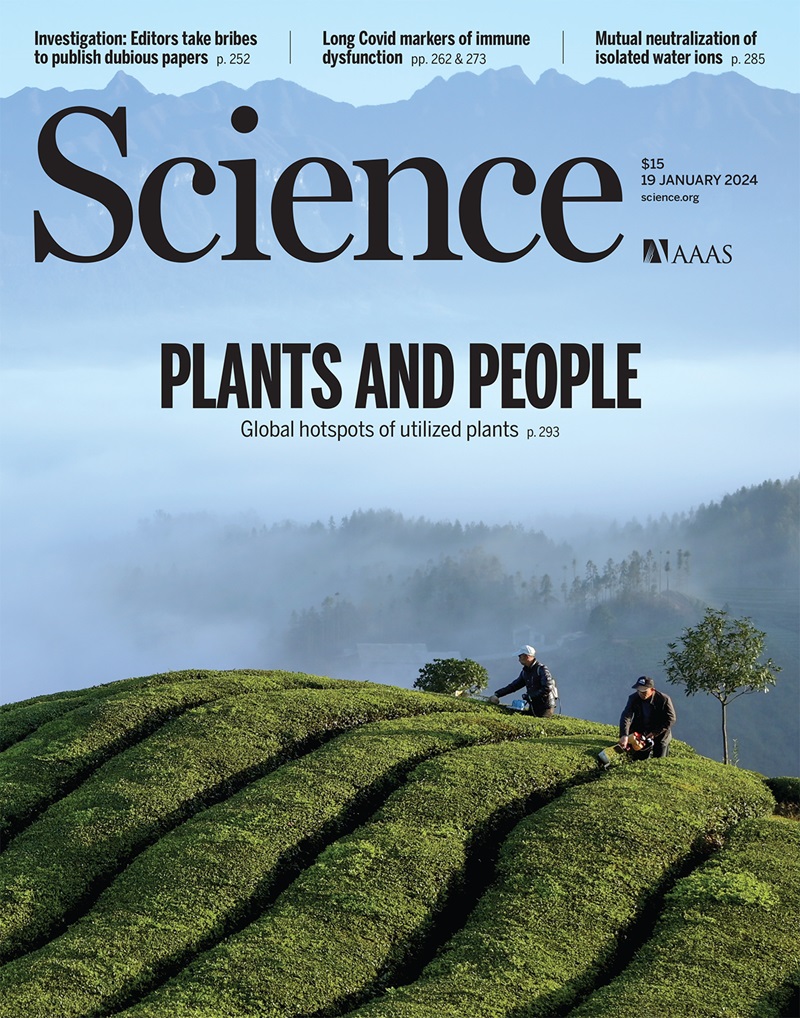快速合成维管树
IF 45.8
1区 综合性期刊
Q1 MULTIDISCIPLINARY SCIENCES
Science
Pub Date : 2025-06-12
引用次数: 0
摘要
通过为药物筛选、疾病建模和移植提供丰富的人工组织和器官,从活细胞中设计出具有生物功能的结构可以解决全球健康挑战(1-4)。血管系统是厚组织存活的重要组成部分。这个树状网络通过分层结构向细胞输送营养,调节血压,并提供弹性血液流动(5)。为厘米级人造组织设计微到毫米级的血管结构需要大量的计算资源(6)。因此,工程血管网络通常具有简单的晶格结构,易于制造,但表现出不均匀的压力梯度和流量分布。在本期的第1198页,Sexton等人(7)报告了一种计算方法,该方法可以以超过230倍于传统方法的速度设计复杂的血管树网络。这使得解剖学上真实的血管网络的设计器官尺度的生物制造。本文章由计算机程序翻译,如有差异,请以英文原文为准。
Synthesizing vascular trees at speed
Engineering a biologically functional structure from living cells can solve global health challenges by supplying abundant artificial tissues and organs for drug screening, disease modeling, and transplantation (1–4). A vascular system is an essential component for the survival of thick tissues. This tree-like network delivers nutrients to cells, regulates blood pressure, and provides resilient blood flow through a hierarchical structure (5). Designing a micro- to millimeter-scale vascular architecture for a centimeter-scale artificial tissue requires extensive computational resources (6). Consequently, engineered vascular networks often have a simple lattice structure that is easy to fabricate but exhibits nonuniform pressure gradient and flow distribution. On page 1198 of this issue, Sexton et al. (7) report a computational approach that can design a complex vascular tree network at more than 230 times the speed of traditional methods. This enables the design of anatomically realistic vascular networks for organ-scale biofabrication.
求助全文
通过发布文献求助,成功后即可免费获取论文全文。
去求助
来源期刊

Science
综合性期刊-综合性期刊
CiteScore
61.10
自引率
0.90%
发文量
0
审稿时长
2.1 months
期刊介绍:
Science is a leading outlet for scientific news, commentary, and cutting-edge research. Through its print and online incarnations, Science reaches an estimated worldwide readership of more than one million. Science’s authorship is global too, and its articles consistently rank among the world's most cited research.
Science serves as a forum for discussion of important issues related to the advancement of science by publishing material on which a consensus has been reached as well as including the presentation of minority or conflicting points of view. Accordingly, all articles published in Science—including editorials, news and comment, and book reviews—are signed and reflect the individual views of the authors and not official points of view adopted by AAAS or the institutions with which the authors are affiliated.
Science seeks to publish those papers that are most influential in their fields or across fields and that will significantly advance scientific understanding. Selected papers should present novel and broadly important data, syntheses, or concepts. They should merit recognition by the wider scientific community and general public provided by publication in Science, beyond that provided by specialty journals. Science welcomes submissions from all fields of science and from any source. The editors are committed to the prompt evaluation and publication of submitted papers while upholding high standards that support reproducibility of published research. Science is published weekly; selected papers are published online ahead of print.
 求助内容:
求助内容: 应助结果提醒方式:
应助结果提醒方式:


